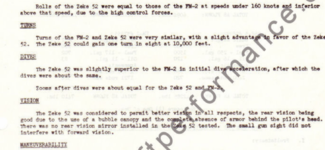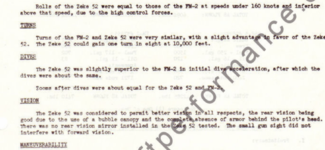Shortround6
Major General
I could be wrong but I think the F4F was the last Navy plane to be tested with a terminal velocity dive.Every aircraft will have a DO NOT EXCEED speed, to include an F4F. It is shown in flight manuals as VNE and is usually indicted as a red line on airspeed indicators. It is the speed at which structural damage to the airframe can occur if abrupt maneuvers are attempted or if flown in turbulent air. Even though we know the F4F was built like a tank, given the right circumstances, you can bend or break the airframe.
Back in WW2 some parameters like VNE were sometimes not indicted in the flight manual or marked on the airspeed indicator
Test pilot took the plane up to a certain altitude and then dove down vertical or near vertical until the plane simply didn't go any faster (drag equaled thrust/gravity) and the pilot pulled out. Quite often a special test pilot was hired to do this test instead of the regular company test pilot/s. The Navy also required every design to perform a 10 turn spin to the right and a ten turn spin to the left.
The Corsair was supposed to be the first plane that didn't have to pass these tests although they tried more than once.
With planes that had the speed of the Corsair there simply wasn't enough altitude to perform these tests like they did with the biplanes and first generation monoplanes. The tests, like the spin tests, took a lot more altitude per turn of spin. The dive test was running into compressibility.


